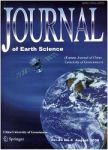Paleogeographical Distribution and Stratigraphical Range of the Lower Triassic Claraia,Pseudoclaraia and Eumorphotis(Bivalvia)
Paleogeographical Distribution and Stratigraphical Range of the Lower Triassic Claraia , Pseudoclaraia and Eumorphotis (Bivalvia)出 版 物:《Journal of Earth Science》 (地球科学学刊(英文版))
年 卷 期:1990年第9卷第1期
页 面:102-114页
核心收录:
学科分类:0709[理学-地质学] 081803[工学-地质工程] 07[理学] 08[工学] 0818[工学-地质资源与地质工程]
主 题:Lower Triassic ,bivalves paleobiogeography ,stratigraphy .
摘 要:On the basis of a worldwide review of Claraia , Pseudoclaraia and Eumorphotis , especially their important species , two range zones are recognized:the Pseudoclaraia wangi range zone —— Upper Griesbachian—— and the Claraia stachei- C. aurita - Eumorphotis multiformis acme zone—— Upper Griesbachian to Lower Smithian This result revises both the tradition-al Chinese concept regarding these fossils as limited in Lower Scythian and the viewpoint of some Eurasian researchers who hold Eumorphotis multiformis to be Upper Scythian . The paleogeographical distribution of the three genera is controlled primarily by temperature (latitude) and secondarily by physiographic separations .Distribution of these fossils is subdivided into four realms and five provinces . The Eastern Asia province of the Tethys realm is suggested as the source area of these fossils .The striking contrast between the composition of the species along the southern and northern margins of the Tethys , together with other distributional characters ,supports the plate tectonic theory .



